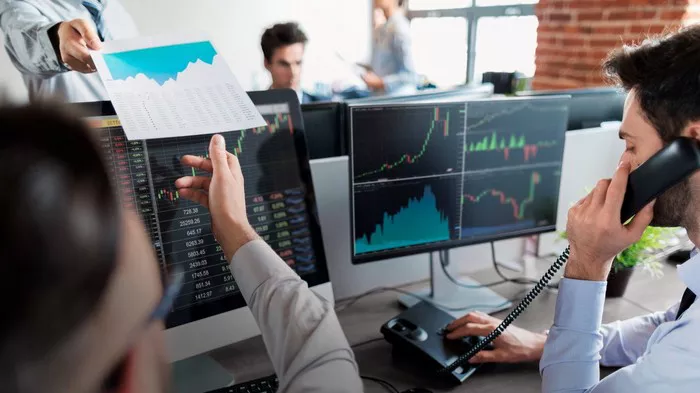In the world of finance and investment, the terms “futures” and “commodities” hold significant importance. These two concepts are closely intertwined and play a vital role in global markets. Futures and commodities are essential tools for investors and traders, offering opportunities for profit and risk management.
Futures and Commodities Defined
Before delving into the details, let’s define what futures and commodities are:
Futures: Futures are standardized financial contracts that obligate the parties involved to buy or sell a specified quantity of an underlying asset at a predetermined price and date in the future. These contracts are traded on organized exchanges and serve as a way to hedge against price fluctuations or speculate on future price movements.
Commodities: Commodities are raw materials or primary agricultural products that can be bought and sold, such as crude oil, gold, wheat, or cotton. They are typically interchangeable with other goods of the same type and quality. Commodities serve as the underlying assets for futures contracts.
Understanding Futures
Purpose of Futures Contracts
Futures contracts serve various purposes for participants in the market. For producers and consumers of commodities, futures contracts provide a means of managing price risk. For speculators and investors, they offer opportunities to profit from price movements without owning the underlying asset. This dual function makes futures contracts a versatile tool in financial markets.
Structure of Futures Contracts
Futures contracts are standardized in terms of the quantity, quality, expiration date, and delivery location of the underlying asset. Standardization ensures that each contract is consistent and easily tradable. For example, a standard crude oil futures contract might specify delivery of 1,000 barrels of oil of a certain grade at a specific delivery point.
Margin Requirements
When trading futures, participants are required to deposit a margin with their brokerage. The margin is a fraction of the contract’s total value and serves as collateral. It acts as a buffer against potential losses and ensures that traders fulfill their contractual obligations.
Trading Futures
Long and Short Positions
In the futures market, participants can take either long or short positions. A long position involves buying a futures contract with the expectation that the price will rise, allowing the contract to be sold at a profit. In contrast, a short position entails selling a futures contract with the anticipation that the price will fall, enabling the contract to be bought back at a lower price.
Leverage and Risk
Futures contracts are highly leveraged instruments. Traders can control a substantial amount of the underlying asset with a relatively small margin deposit. While leverage can amplify profits, it also magnifies potential losses. Risk management is crucial when trading futures to avoid substantial financial setbacks.
Understanding Commodities
Types of Commodities
Commodities can be categorized into two main groups: hard commodities and soft commodities. Hard commodities are natural resources like metals, energy products, and agricultural products. Soft commodities include items like coffee, sugar, and cotton.
Commodity Supply and Demand
The prices of commodities are influenced by various factors, including supply and demand dynamics, geopolitical events, weather conditions, and economic trends. For instance, a poor harvest can lead to decreased supply and increased prices for agricultural commodities.
Commodity Exchanges
Commodities are typically traded on specialized commodity exchanges like the Chicago Mercantile Exchange (CME) and the Intercontinental Exchange (ICE). These exchanges provide a platform for buying and selling commodity futures contracts.
The Relationship Between Futures and Commodities
Hedging with Futures
One of the primary purposes of futures contracts is hedging. Producers and consumers of commodities use futures contracts to protect themselves from adverse price movements. For example, a farmer might sell futures contracts to lock in a price for their crop before harvest, ensuring a minimum level of revenue.
Speculation with Futures
Speculators play a crucial role in futures markets. They are individuals or entities that do not have a direct interest in the underlying commodity but aim to profit from price fluctuations. Speculators provide liquidity to the market and help ensure that futures prices accurately reflect supply and demand dynamics.
Price Discovery
Futures markets are essential for price discovery in commodities. The prices established through futures trading provide valuable information to market participants, helping them make informed decisions about buying, selling, or holding physical commodities.
Risk and Rewards in Futures and Commodities
Potential for High Returns
Futures and commodities trading offer the potential for substantial profits due to leverage. Traders can control large positions with relatively small amounts of capital, allowing for amplified returns if market conditions align with their positions.
High Risk
The high potential returns in futures and commodities trading come with equally high risks. Market volatility can lead to rapid and significant price swings, causing losses that exceed the initial margin deposit. Proper risk management and a well-defined trading strategy are crucial for mitigating these risks.
Regulation and Oversight
Regulatory Bodies
Futures and commodities markets are subject to regulation by various governmental and non-governmental bodies, depending on the jurisdiction. In the United States, for example, the Commodity Futures Trading Commission (CFTC) oversees futures and options markets to ensure fair and transparent trading.
Market Surveillance
Regulators and exchanges employ market surveillance mechanisms to detect and prevent market manipulation and fraud. These measures help maintain market integrity and protect market participants.
Conclusion
Futures and commodities are integral components of the global financial landscape. They offer diverse opportunities for investors and traders while serving essential functions for producers and consumers of commodities. Understanding how futures contracts work and their relationship with underlying commodities is essential for anyone considering participation in these markets. However, it is crucial to approach futures and commodities trading with caution, as the potential for high returns is accompanied by equally significant risks. Proper education, risk management, and adherence to a well-defined trading strategy are key to success in these markets. Whether used for hedging or speculation, futures and commodities continue to shape the world of finance and play a vital role in the global economy.


